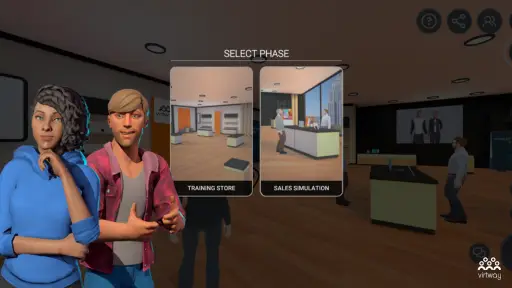Metaverse Conferences: A Step Towards Online Networking
Our lifestyle is headed toward a virtual world and many already noticed this tendency a few years ago, but it is now when we can appreciate that this reality has come to stay. Additionally, the global crisis caused by the coronavirus is a clear trigger for this quick change.
For months now, the way we connect with each other has radically changed. Within a few days, personal meetings were substituted by online encounters through virtual platforms and video calls were the meeting point with our friends and family.
And, although this change of scenario and mentality seemed to only affect people on a personal level, it was soon followed by companies, businesses, and commercial activities on all levels. In a matter of hours, a conference or any type of face-to-face meeting became dangerous for our health and the ones around us.
What began as punctual cancellations or postponements quickly became rules: all in-person events were to be suspended indefinitely. And with that, in-person activities disappeared almost entirely from offices around the world. At this point, most businesses had to face the challenge of finding a virtual conference platform, both to communicate with their users and to be in contact with their remote workers, in order to avoid the entrepreneurial activity being entirely annulled.
Virtual reality was the key that opened the doors to this whole new world. The great advances made in this technology during the past years have allowed us to combine the security and commodity of online meetings with the interactivity of face-to-face activities. And, although it was considered as progress only accessible for big enterprises, that is no longer the case. In fact, nowadays, virtual conferences seem to be the order of the day, no matter the size or the activity business. Online networking is now found in every sector and at every level.
The reasons to invest in virtual events in 2020 are several and diverse, nevertheless, you need to know how to do it. Like any entrepreneurship, a strategy and some guidelines are required to ensure making the right choice.
7 tips for organizing virtual conferences

1. Choose the topic for your virtual conference
Common sense is a basic element that must be present in each step of organizing a virtual event. If we want to present a perfume, we might want to approach it from a innovative perspective, at least until they create a platform that allows us to smell (someday, for sure) but, for now, we might want to think if the topic is adequate. However, the event organizers will definitely know how to overcome these limitations.
2. Define your target audience
For any successful planning, it is essential to determine who we are addressing and who is going to be listening. The functioning of a virtual conference is similar to any other kind of event: we need to know our audience, how to get their attention, and design an effective videoconference structure.
3. Choose the platform that best meets your event needs
Thanks to the advances in this technology, we can find implements to suit all tastes and objectives. Therefore, it is important to analyze which is going to better meet our requirements. We can simply opt to share a video message on social media or go further and use interactive 3D avatars. This is one of the most vanguard options we can nowadays find, and it allows us to organize videoconferences and online seminars where hundreds of assistants work simultaneously, aiming to achieve an almost real and immersive interaction. This is one of the reasons for supporting virtual events based on 3D avatars: extremely realistic and interactive experiences.
4. Create a smooth and effective structure
In the same way, it happens with face-to-face meetings, virtual conferences require defined guidelines and a script with a delimited structure, which can meet the requirements of the company and the audience. Therefore, it is essential to create an event built on presentations, seminaries, and activities, as well as provide some time to solve possible doubts and questions. In this sense, it is interesting to take into account these avatars. In fact, Virtway has a highly advanced virtual platform in which the virtual characters can mimic the physical aspects of the conference keynote speakers, and can have real-time conversation through VoIP (even the volume is regulated depending on the proximity between avatars). Showing emotions, such as greeting or clapping, is also possible thanks to the animations.
5. Create a smooth and effective structure
One of the most successful elements of these virtual conferences is the possibility of on-demand content. This possibility enhances the experience and raises the interest in participating. For this reason, it is important to provide the participants with a broad variety of opportunities to get to know the products and services that are being exhibited through pictures and videos, demos, flyers, electronic books, and all kinds of digital material that can be downloaded and checked at any time.
6. Define a follow-up strategy
After the event, it is essential to perform a follow-up of the potential clients that have shown up. To guarantee future conversations, it is possible to send an email to all the prospects, asking about their opinions about the event, or inviting them to take part in a survey. These actions not only will help get new clients and their loyalty but also, will be key for identifying which parts of the online experience were effective, with the aim of improving future events.
7. Share content and create connections
Online conferences can be filmed, which turns them into information sources that can be easily shared. In this sense, it is important to arrange a good database to present the content, so the event will expand exponentially, especially if we take advantage of social media.
The advantages and possibilities that virtual conferences can offer cause it to become the ultimate business communication tool, no matter the moment or situation. However, it is now when its value is at its peak. Because, as we have seen, we live in an uncertain present where in-person events cannot take place, and companies must focus all their efforts on maintaining services with remote solutions.



